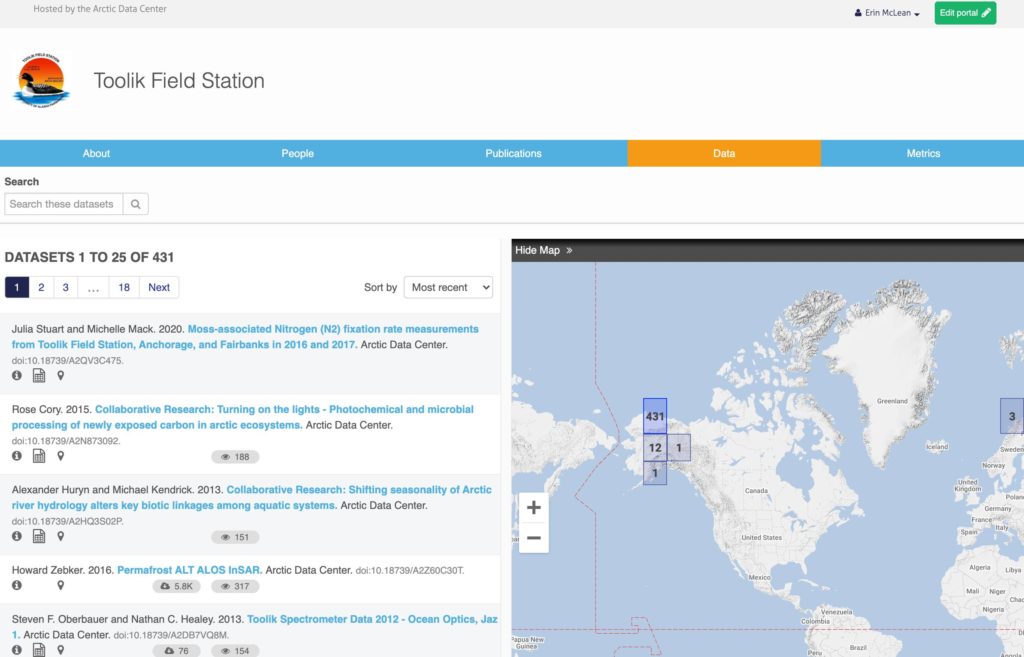An exciting new update to the Arctic Data Center has just been released – researchers can now create a portal allowing related data from across the Arctic Data Center to be viewable in the same place. The ability to group related datasets is helpful for researchers working across a particular taxon or region, so we designed a user-friendly portal editor to enable users to do just that. Portals make highlighting and sharing related datasets easy for researchers, projects, and labs. For example, portals can be created for a specific project, such as the Circumpolar Active Layer Monitoring Program, or for a specific organization, like the Distributed Biological Observatory.

Portals are available for all Arctic Data Center users and have a number of useful features:
- Users can curate a collection of datasets and create a customized website showcasing that data all in one place.
- The discovery interface includes an interactive map that scrolls and zooms to focus the data search to a particular region.
- Customized search fields can be created that help narrow down the data search to specific metadata fields like Research Vessel or Field Site.*
- Portals give researchers the option to view portal-specific metrics such as the total number of associated datasets, the file formats represented, and the span of data included.
- Each portal can be branded with logos and colors and has a customizable URL, enabling a portal to serve as a landing page for a particular project or grant.
- Additional information on team members, associated publications, and essential details about the project or lab can be added using a user-friendly interface and customized using Markdown.
To support the community, we have created five short tutorial videos outlining what portals are, how to create a portal, how to make freeform text pages, adding datasets to your portal with a search query, and adding datasets to your portal with a grant number. Researchers can start creating portals today by logging in with their ORCiD even if they have not yet submitted data to the Arctic Data Center.
Please reach out to support@arcticdata.io with any questions and our team will be happy to assist.
This work is supported through our current NSF award.
*This feature is coming to the editor soon and can be created by our team in the interim.
